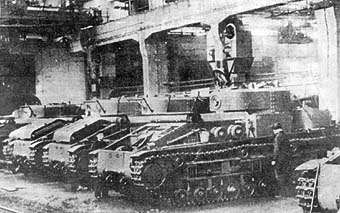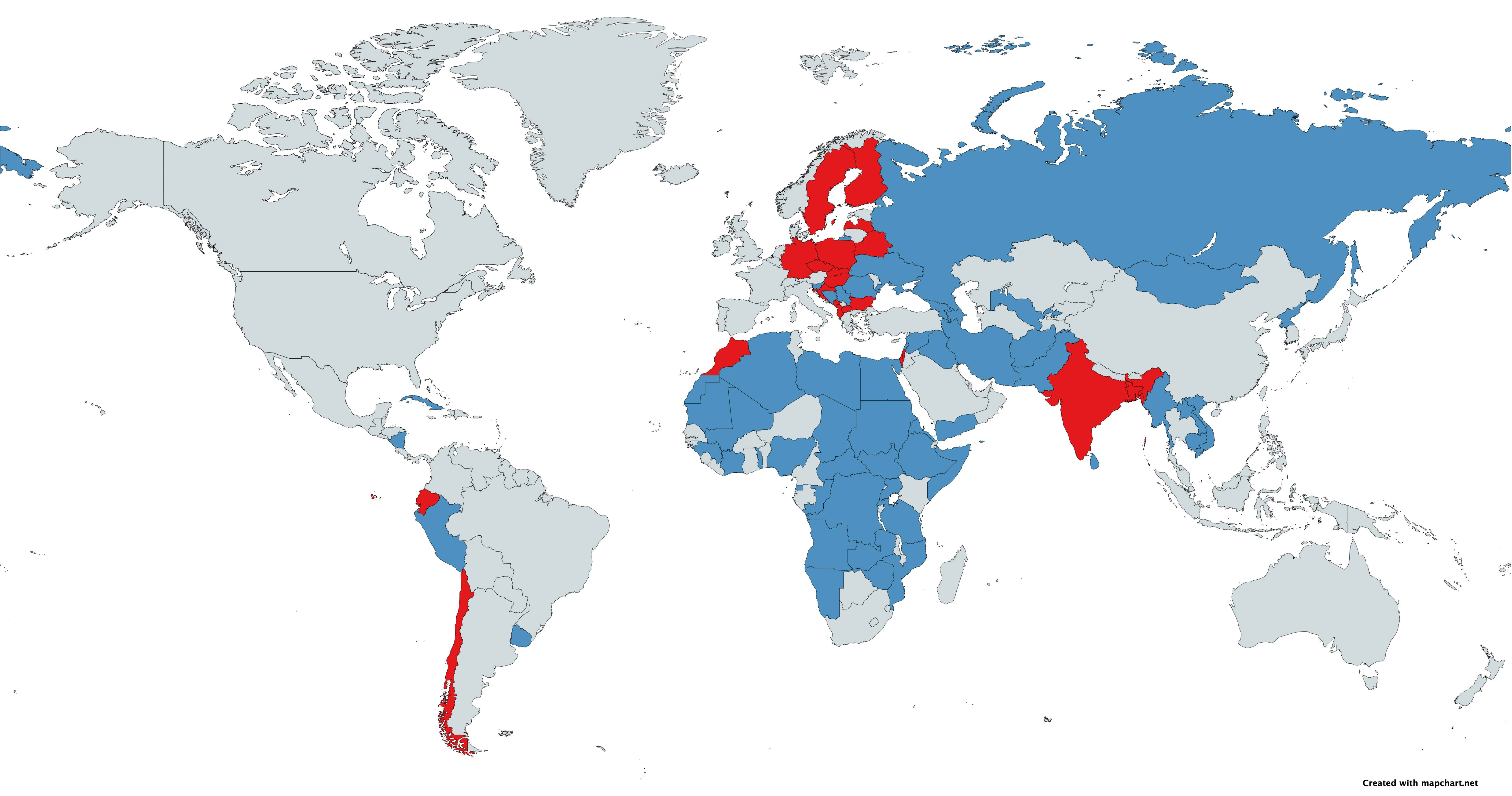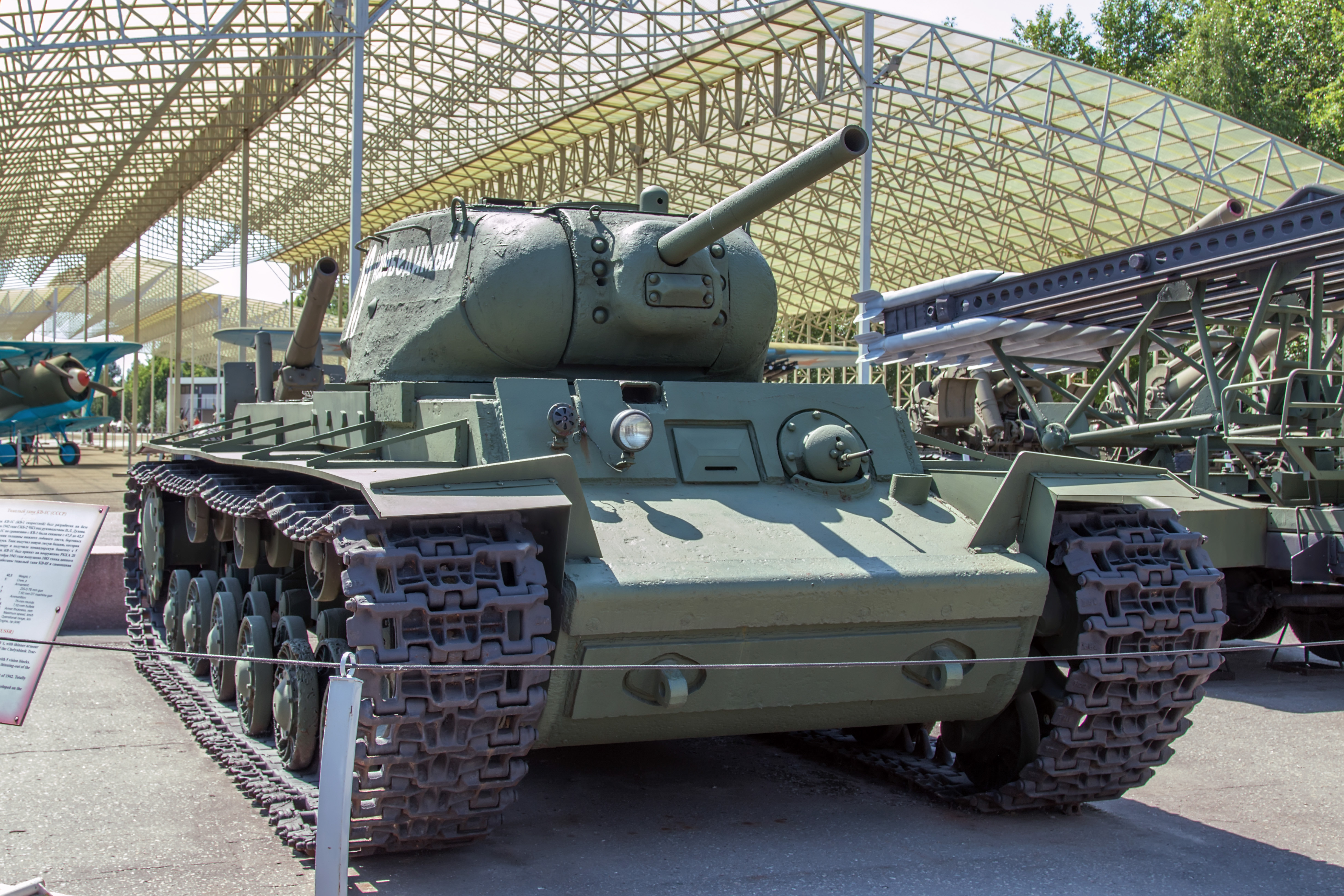|
Parola Tank Museum
Parola Tank Museum, officially Armoured Vehicle Museum (Finnish language, Finnish ''Panssarimuseo'', Swedish language, Swedish ''Pansarmuséet'') is a Museum#military museum, military museum located 110 kilometres north of Helsinki in Parola (Hattula), Parola, near Hämeenlinna, Finland, a few kilometres from the Armoured Brigade (Finland), Finnish Army Armoured Brigade training unit. It displays various tanks, armoured vehicles and anti-tank guns used by the Finnish Defence Forces throughout their history, including the Leopard 2A4 tank which is in present service. Rare exhibits are an armoured train used in World War II and the only surviving example of the BT-42 assault gun. The museum was opened on June 18, 1961, with 19 tanks and 12 anti-tank guns on display. Full list of vehicles Source: * Renault FT * Carden Loyd tankette, Vickers-Carden-Loyd * Vickers 6-ton * T-26 * T-28 (medium tank), T-28 * T-50 tank, T-50 * T-60 * T-70 * BT-42 * T-34 * T-34, T-34-85 * ISU-152, JSU ... [...More Info...] [...Related Items...] OR: [Wikipedia] [Google] [Baidu] |
Parola (Hattula)
Parola is an Urban areas in Finland, urban area in the municipality of Hattula in Finland. It is located 110 kilometres north of Helsinki. Cities nearby include Hämeenlinna, Tampere, Lahti and Forssa. The Armoured Brigade (Finnish Army), Finnish Armoured Brigade is based in Parola. A local attraction is Parola Tank Museum. Parola has a population of 6,678 as of 2022. References Hattula {{SouthernFinland-geo-stub ... [...More Info...] [...Related Items...] OR: [Wikipedia] [Google] [Baidu] |
T-28 (medium Tank)
The T-28 was a Soviet multi-turreted medium tank. The prototype was completed in 1931, and production began in late 1932. It was an infantry support tank intended to break through fortified defences. The T-28 was designed to complement the heavier T-35 (also multi-turreted), with which it shared turret designs. The type did not have great success in combat, but it played an important role as a development project for Soviet tank designers. A series of new ideas and solutions that were tried out on the T-28 were later incorporated in future models. Design history The T-28 was in many ways similar to the British Vickers A1E1 Independent tank, which greatly influenced tank design in the period between the wars, even though only a single prototype was manufactured in 1926. The Kirov Factory in Leningrad began manufacturing a tank that was based on the design of the British Independent in 1932. The T-28 tank was officially approved on 11 August 1933. The T-28 had one large turr ... [...More Info...] [...Related Items...] OR: [Wikipedia] [Google] [Baidu] |
ZSU-57-2
The ZSU-57-2 Ob'yekt 500 is a Soviet Union, Soviet self-propelled anti-aircraft gun (SPAAG), armed with two 57 mm autocannons. 'ZSU' stands for ''Zenitnaya Samokhodnaya Ustanovka'' (), meaning "anti-aircraft self-propelled mount", '57' stands for the Caliber, bore of the armament in millimetres and '2' stands for the number of gun barrels. It was the first Soviet mass-produced Continuous track, tracked SPAAG after World War II. In the USSR, it had the unofficial nickname Sparka (), meaning "twin mount," referring to the twin autocannon with which the vehicle is armed. Development history Origins During World War II, Attack aircraft, ground-attack aircraft emerged as a significant threat to mechanized units on the move. Conventional towed Anti-aircraft warfare, anti-aircraft artillery (AAA), as well as vehicle Mounted smaller machine guns like the ones found on the ZIS-151, ZiS-12 were an inadequate response under such conditions owing to the time needed to bring anti-air ... [...More Info...] [...Related Items...] OR: [Wikipedia] [Google] [Baidu] |
T-72M1
The T-72 is a family of Soviet main battle tanks that entered production in 1973. The T-72 was a development based on the T-64 using thought and design of the previous Object 167M. About 25,000 T-72 tanks have been built, and refurbishment has enabled many to remain in service for decades. It has been widely exported and has seen service in 40 countries and in numerous conflicts. The Russian T-90 introduced in 1992 and the Chinese Type 99 are further developments of the T-72. Production and development of various modernized T-72 models continues today. Development Development from the T-64 The T-72 was a product of a rivalry between design teams. Morozov KB was led by Alexander Morozov in Kharkiv. Uralvagon KB was led by Leonid Kartsev in Nizhny Tagil. To improve on the T-62, two designs based on the tank were tested in 1964: Nizhny Tagil's Object 167 (T-62B) and Kharkiv's Object 434. Ob. 434 was a technically ambitious prototype. Under the direction of Morozov in Kharkiv ... [...More Info...] [...Related Items...] OR: [Wikipedia] [Google] [Baidu] |
T-55M
The T-54/T-55 tank series is the most widely used tank in the world and has seen service in over 50 countries. It has also served as the platform for a wide variety of specialty armoured vehicles.Miller, David ''The great Book of Tanks'' Salamander Books London, England 2002 338-341 Halberstadt, Hans ''Inside the Great Tanks'' The Crowood Press Ltd. Wiltshire, England 1997 94-96 Current operators * : A number of T-55s were in service at the beginning of the 1992 and 1993 War in Abkhazia. These were all lost in the first four months of the fighting, at which point Abkhazian forces had captured 8 T-55s from the Georgians. At peak strength, there were 100 T-55s and T-72s in service. More than 50 T-55s and T-72s were in service in 2004. 87 T-55s and T-72s were in service before the 2008 South Ossetia war. Between 50 and 60 T-55s and T-72s are currently in service. * : 50 T-54s and 50 T-55s were ordered in 1961 from the Soviet Union and delivered between 1962 and 1964 (T-54s were ... [...More Info...] [...Related Items...] OR: [Wikipedia] [Google] [Baidu] |
T-54
The T-54 and T-55 tanks are a series of Soviet medium tanks introduced in the years following the Second World War. The first T-54 prototype was completed at Nizhny Tagil by the end of 1945.Steven Zaloga, T-54 and T-55 Main Battle Tanks 1944–2004, p. 6 From the late 1950s, the T-54 eventually became the main tank for armoured units of the Soviet Army, armies of the Warsaw Pact countries, and many others. T-54s and T-55s have been involved in many of the world's armed conflicts since their introduction in the second half of the 20th century. The T-54/55 series is the most-produced tank in history. Estimated production numbers for the series range from 96,500 to 100,000. They were replaced by the T-62, T-64, T-72, T-80 and T-90 tanks in Soviet and Russian armies, but are still used by up to 50 other armies worldwide, some having received sophisticated retrofitting. The Chinese version of the T-54A is the Type 59. During the Cold War, Soviet tanks never directly faced their NA ... [...More Info...] [...Related Items...] OR: [Wikipedia] [Google] [Baidu] |
T-20 Komsomolets
T-20 armored tractor Komsomolets , an armored continuous track tractor, the T-20 was a prime mover vehicle used by the Soviet Union during the Winter War and World War II. Description The T-20 was designed in 1936 at the Ordzhonikidze Moscow Plant no.37. They were manufactured during 1937–1941 at Factory no. 37, as well as at STZ and GAZ. The tractor was designed to tow light artillery pieces such as the 45mm anti-tank gun and the 120mm heavy mortar. The tractor could tow the weapons themselves plus a small quantity of ammunition, usually towed in a limber, along with up to six crewmen. Occasionally, two limbers were towed to increase the ammunition supply. The forward compartment provided space for the driver and vehicle commander. It was fully armored and had a ball-mounted DT machine gun. The rear compartment held the gun crews, seated back-to-back in outward-facing bench seats. A canvas top could be erected for protection in poor weather. Approximately 4401 T-20 tr ... [...More Info...] [...Related Items...] OR: [Wikipedia] [Google] [Baidu] |
BA-10
The BA-10 () was an armored car developed in the Soviet Union in 1938 and produced through 1941. It was the most produced Soviet pre-1941 heavy armored car – 3311 were built in three versions. These versions were the BA-10, the BA-10M (improved version with new radio), and the BA-10ZhD (equipped for dual railway/road use). The basic BA-10 design was developed from the BA-3 and BA-6 heavy armored cars. It had an improved GAZ-AAA chassis and improved armor (up to 15mm at front and turret). It was intended that the BA-10 would be replaced in 1941 by the BA-11 with diesel engine and more sophisticated armor design, but the outbreak of war prevented BA-11 production. The BA-10 was in Red Army service until 1945. Significant numbers of captured BA-10s were used by Finland (at least 24, 3 of which were sold to Sweden), Germany and other Axis powers in Europe. Development During the late 1930s, Soviet armoured fighting vehicle designers incorporated sloped armor into all the ... [...More Info...] [...Related Items...] OR: [Wikipedia] [Google] [Baidu] |
BA-20M
The BA-20 () was an armored car developed in the Soviet Union in 1934. It was intended to replace the FAI and its field trials were completed in 1935. The BA-20 was then used in the early stages of World War II. Design and production The BA-20 armored car was developed in 1934 for use by HQ staffs, reconnaissance and communications units. It was derived from the civilian GAZ-M1 car using its chassis, which was itself a modified version of a Ford design, produced by the Nizhny Novgorod-based vehicle manufacturer GAZ. Full production of the BA-20 started in 1935. The chassis was built at the Nizhny Novgorod factory; the body was built at the Vyksinskiy plant, where final assembly of the BA-20 occurred as well. Service The principal use of the BA-20 was as a scout vehicle. The BA-20's tires were designed to be resistant to bullets and shrapnel by the simple expedient of filling them with spongey rubber. A variant, the BA-20ZhD, could travel on railway lines by replacing the norma ... [...More Info...] [...Related Items...] OR: [Wikipedia] [Google] [Baidu] |
KV-1
The Kliment Voroshilov (KV; ) tanks are a series of Soviet heavy tanks named after the Soviet defence commissar and politician Kliment Voroshilov who operated with the Red Army during World War II. The KV tanks were known for their heavy armour protection during the early stages of the war, especially during the first year of the German invasion of the Soviet Union. In certain situations, even a single KV-1 or KV-2 supported by infantry could halt German formations. The German ''Wehrmacht'' at that time rarely deployed its tanks against KVs, as their own armament was too poor to deal with the "''Russischer Koloss''" – "Russian Colossus". The KV tanks were practically immune to the 3.7 cm KwK 36 and howitzer-like, short-barreled guns mounted, respectively, on the early Panzer III and Panzer IV tanks fielded by the invading German forces. Until the Germans developed more effective guns, the KV-1 was invulnerable to almost any German weapon except the 8.8 cm Flak gun. Prior ... [...More Info...] [...Related Items...] OR: [Wikipedia] [Google] [Baidu] |
ISU-152
The ISU-152 (, meaning " IS tank based self-propelled installation with 152mm caliber gun") is a Soviet self-propelled gun developed and used during World War II. It was unofficially nicknamed ''Zveroboy'' (; "beast killer") in response to several large German tanks and guns coming into service, including Tigers and Panthers. Since the ISU-152's gun was mounted in a casemate, aiming it was awkward, and had to be done by repositioning the entire vehicle using the tracks. Therefore, it was used as mobile artillery to support more mobile infantry and armor attacks. It continued service into the 1970s and was used in several campaigns and countries. History The beginnings of the ISU-152 came on 24 January 1943, when the first prototype of the SU-152 was unveiled. This was a fully enclosed 152mm gun-howitzer on the KV-1S tank chassis. It was designated ' ("Object 236") . Object 236 was completed in Factory No. 100 in Chelyabinsk, and was tested successfully from 24 January to 7 ... [...More Info...] [...Related Items...] OR: [Wikipedia] [Google] [Baidu] |
T-34
The T-34 is a Soviet medium tank from World War II. When introduced, its 76.2 mm (3 in) tank gun was more powerful than many of its contemporaries, and its 60-degree sloped armour provided good protection against Anti-tank warfare, anti-tank weapons. The T-34 had a profound effect on the conflict on the Eastern Front (World War II), Eastern Front, and had a long-lasting impact on tank design. The tank was praised by German generals when encountered during Operation Barbarossa, although its armour and armament were surpassed later in the war. Its main strength was its cost and production time, meaning that German panzer forces would often fight against Soviet tank forces several times their own size. The T-34 was also a critical part of the mechanized divisions that formed the backbone of the Deep operation, deep battle strategy. The T-34 was the mainstay of the Soviet Red Army armoured warfare, armoured forces throughout the war. Its general specifications remained n ... [...More Info...] [...Related Items...] OR: [Wikipedia] [Google] [Baidu] |







